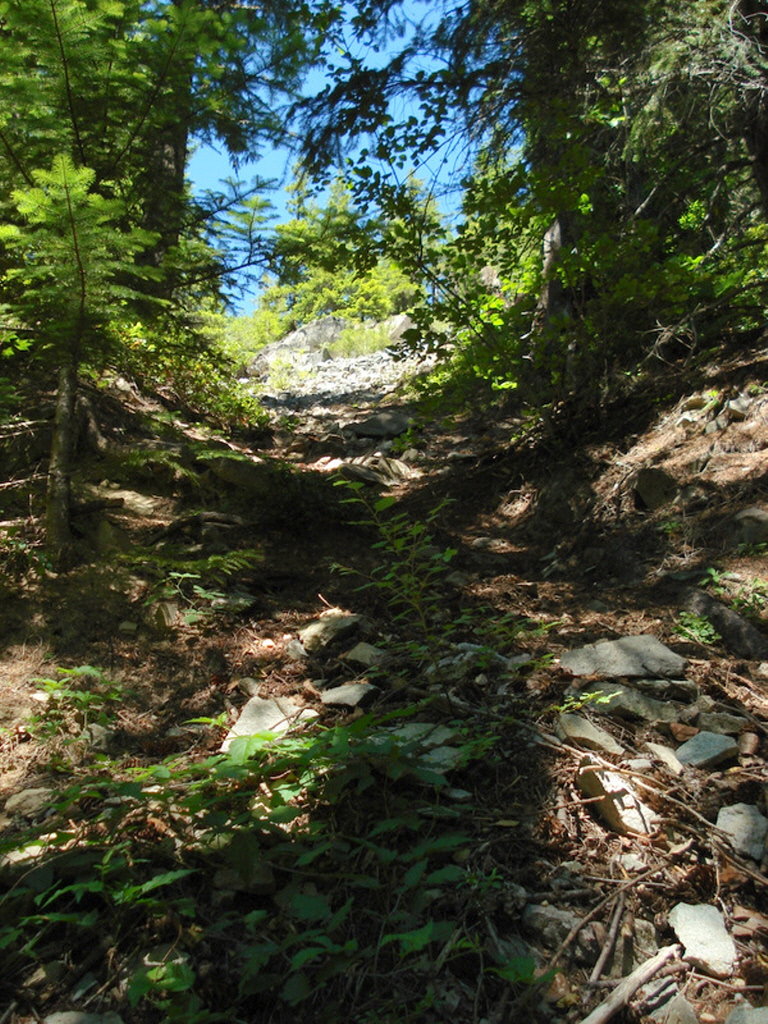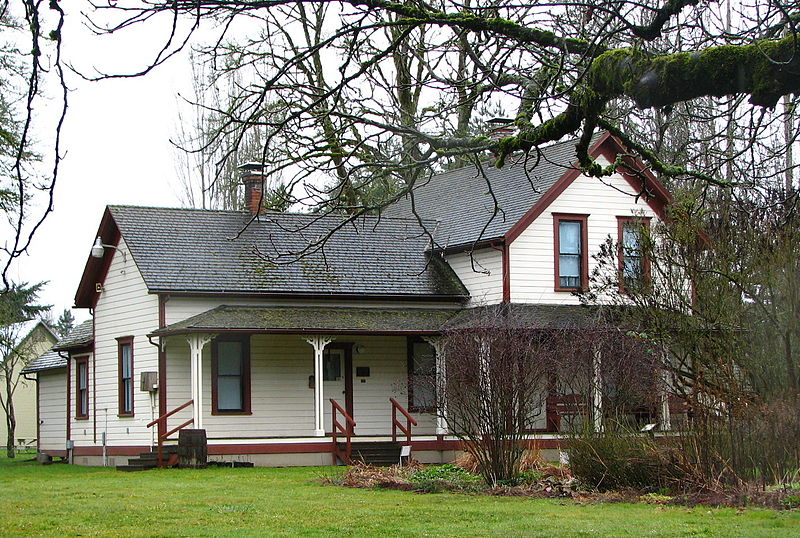I’ve mentioned the grueling Barlow Road around the south slope of Mt. Hood before. Barlow Road was the last leg of the Oregon Trail for the emigrants who decided against floating down the Columbia River.
The descent down Laurel Hill on Barlow Road past the summit, a 60 degree slope in places, was one of the most treacherous stretches of the entire trail, particularly for those travelers who took it in 1847, the first year the road operated. Many of the travelers encountered the early snows of winter, and risked their lives and health to finish the trail.
The wagon trains were relieved to finally pass Mt. Hood and reach the Sandy River. They followed the Sandy for a while (near what is now U.S. Highway 26), then crossed to the Clackamas River, and then into Oregon City.
Just before they reached the Clackamas, they found Philip Foster’s farm—the first home of a white man many of them had seen since leaving Missouri. Philip Foster purchased this land in 1847, and built a house, barn and store at the site.
The Fosters had come to Oregon in 1843 by way of Hawaii, and Philip was the first Treasurer of the Provisional Government of Oregon in 1844-45. He helped Sam Barlow build Barlow Road, and founded the flour mill in Oregon City with John McLoughlin. He then bought the farm for the express purpose of supplying the emigrants arriving via the Barlow Road, and his farm and store were welcome sights for the weary pioneers.
Here is what E.W. Conyers had to say about the Foster Farm:
…we arrived at Mr. foster’s about 10 a.m., and camped by a creek near the Foster home…and then engaged in dinner at the house at a rate of fifty cents per meal. Our dinner consisted of hot biscuits, cold slaw, fresh beefsteak, and boiled potatoes, served with hot coffee or tea. this meal tasted very good and sweet to us after our long trip of five months across the continent…One young man took a chair at the table with us and continued eating after the third table was served. finally Mr. foster, fearing the young man would kill himself by eating too much, ordered him from the table. He very reluctantly obeyed, went out to camp…and laid down in the grass. He soon became a sick young man, and for the next three hours writhed in great agony…”
E. W. Conyers; September 23, 1852
And Esther Hanna described the farm as follows:
Our spirits lifted at this sight…as if our journey was well nigh ended.” “Mr. Foster has accommodations for emigrants and their sick. He has a store to supply them with provisions and he boards a great many of them at his own table. He also has pasturing for stock, an abundance of hay, oats, in short everything that the emigrant needs when stopping. Nearly everyone stops for a short time…He has a very comfortable frame house, barn, storehouse, and other out houses. He has a fine young apple and peach orchard, which are both bearing very well. We had a good supper on potatoes and beef. The potatoes raised here are very good indeed, being very dry and rich. The bread is very white, so that the wheat and flour must be good. The house and supper table are crowded like a hotel…” Esther Belle Hanna; September 16, 1852
Most emigrants to Oregon who took the Barlow Road stopped at the Foster Farm to rest and graze their livestock. Those who still had any money or goods to barter purchased supplies to see them through the last leg of their journey.
I had my characters stop at the Foster Farm in 1847. I may have fudged a little. If the Fosters just purchased the farm that year, I don’t know if the store was in operation. But I couldn’t resist them stopping at this landmark after their terrible experiences on the trail.
The Philip Foster Farm National Historic Site in Eagle Creek, Oregon, now offers living history demonstrations to the public.
How would you have felt to see the Foster Farm after six months on the Trail?


